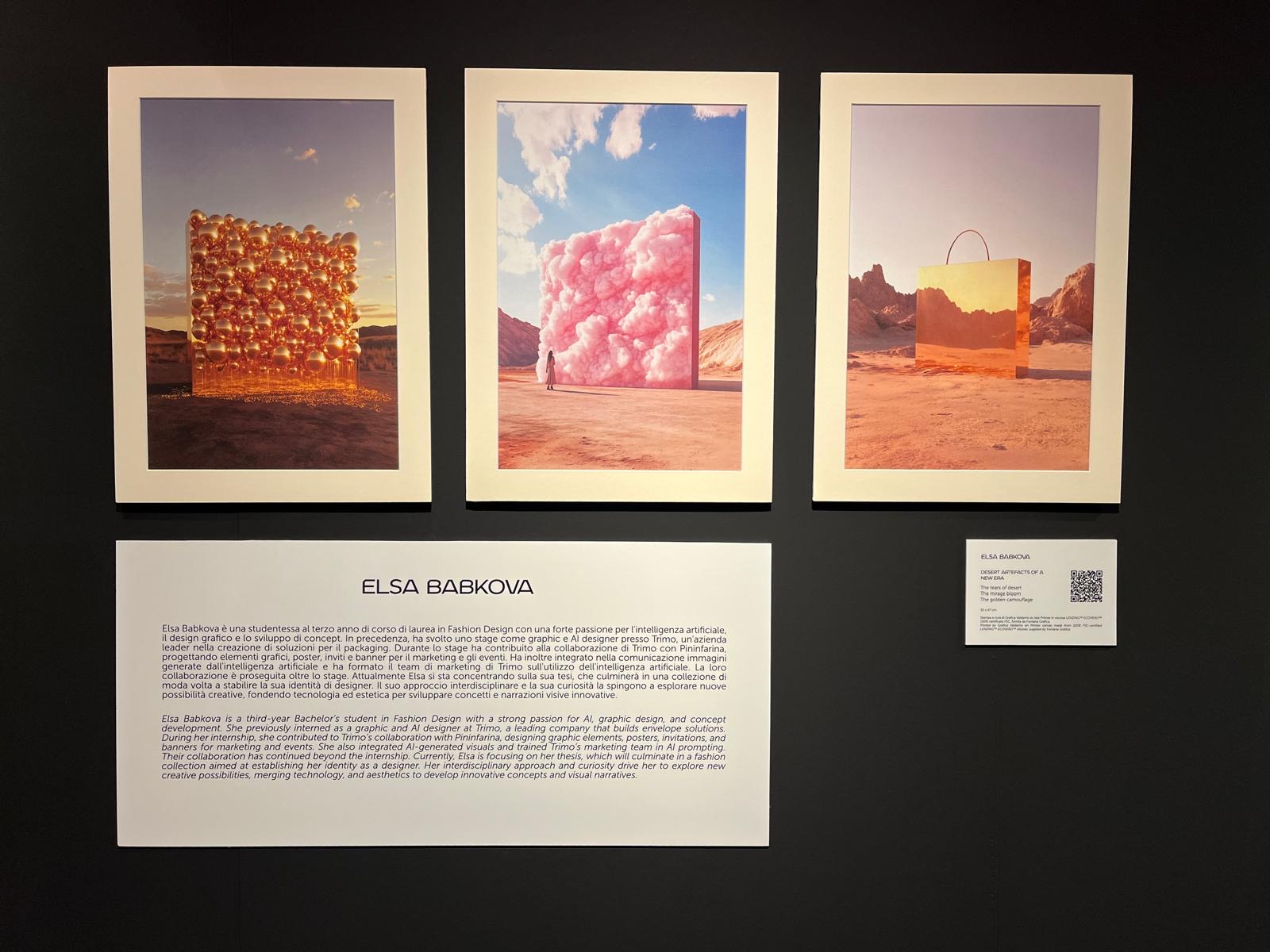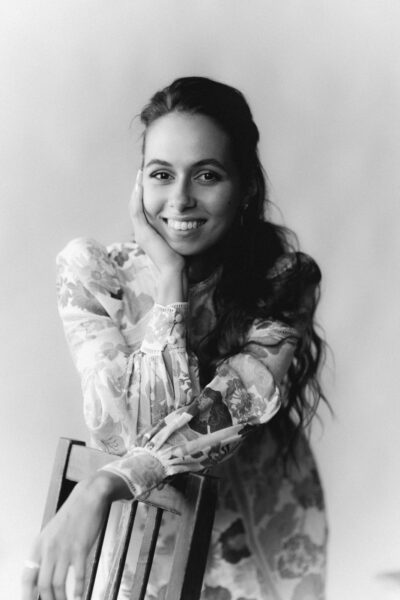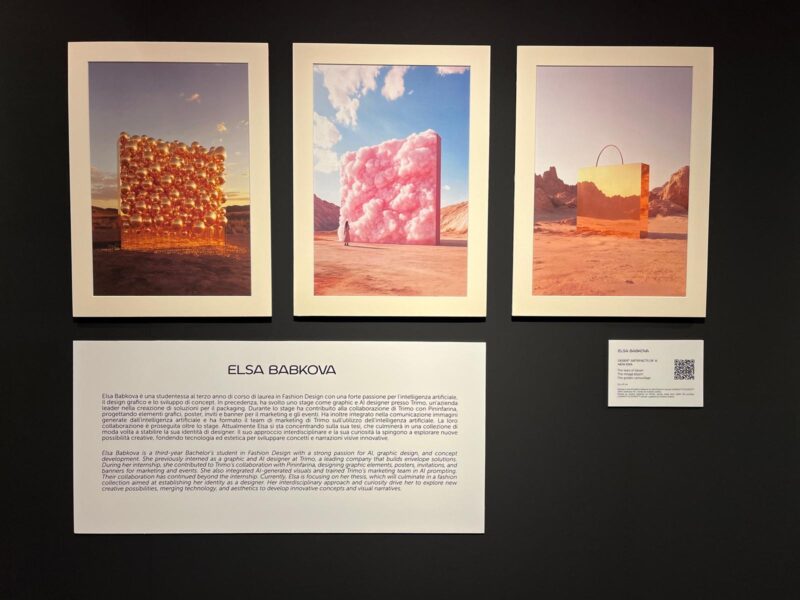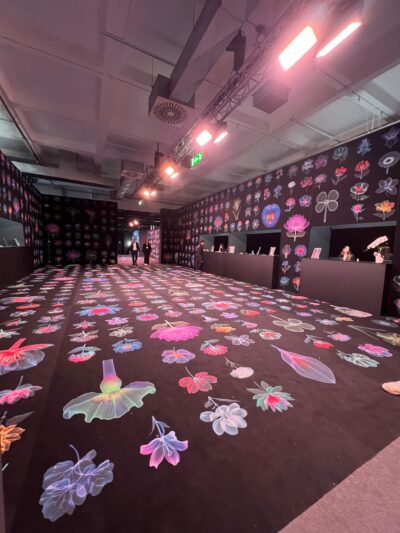HAMK Student Elsa Babkova’s AI Art Featured at Major Italian Packaging Exhibition

HAMK’s Smart and Sustainable Design student, Elsa Babkova, showcased her innovative AI-generated artwork at the Packaging Première and PCD Milan exhibition in Italy on 13–15 May 2025. This major packaging event also features the Art Gallery exhibition, which focused this year on the prompting revolution and AI applications in art and design. Elsa was one of the nine artists selected for the gallery.
Elsa, originally from Estonia and now a third-year fashion design student, has a strong passion for AI, graphic design, and concept development. Previously, she interned as a graphic and AI designer at Trimo, a leading company that builds envelope solutions. During her internship, she contributed to Trimo’s collaboration with Pininfarina, designing graphic elements, posters, invitations, and banners for marketing and events. She also integrated AI-generated visuals and trained Trimo’s marketing team in AI prompting. Her fascination with AI led her applying to the Packaging Première exhibition.

Elsa heard about this exhibition opportunity from visiting lecturers Andrea Filippi and Gabriele Moschin from Italy, who conducted AI workshops for HAMK Design students. Elsa’s application was successful, and three of her AI-generated pieces, created using MidJourney, were chosen. The exhibition had a public open admission which meant that anyone in the world could submit their works there, not only designers.
Inspiration for Luxury Packaging Professionals
For this year’s exhibition, artists needed to create something that inspires luxury packaging professionals and opens new horizons for future packaging by using AI. The starting point of the process was the question: “What has artificial intelligence done for design?” Artists also needed to consider the interplay of art, packaging, and nature. “It was a big challenge for me to come up with something that wasn’t the packaging itself but something that inspires those professionals who create the packaging”, Elsa says.
“I came up with this trio of works: ‘The golden camouflage’, ‘The mirage bloom’, ‘The tears of desert’. The name of my project is ‘Desert artefacts of a new era’“, Elsa explains. In the exhibition’s introduction, she described her works as follows:
In an endless desert, three monumental objects rise: a golden slit like a bag, a vast cotton candy-like form, and a reflective golden bubble rectangle. These oversized forms embody luxury packaging – opulent, intriguing, transformative. Their scale creates an otherworldly scene where packaging becomes a statement of power and desire. The desert’s isolation amplifies their presence, making them feel like sacred artefacts of a new era – untouched, coveted, and waiting to be discovered.

Human Vision Meets AI Output
Elsa says she has been prompting for almost two years: “I think it comes out a little bit easier because you get to know what the AI wants after all. Prompting itself is something you can learn but it’s more difficult when you don’t have an idea of what you are aiming for. Working with AI can also be a bit unpredictable. Especially if you want to create an image with a person, it is still a huge challenge for AI and the results can be distorted.”

This project taught Elsa to embrace experimentation and avoid overthinking. “I created many works for the application process and tried to create something unexpected. When I had prompted a picture, I came up with an idea of what the picture means to me. So, it can work both ways: either you already have an idea, or you give the meaning to the picture you have created with AI”, Elsa says.